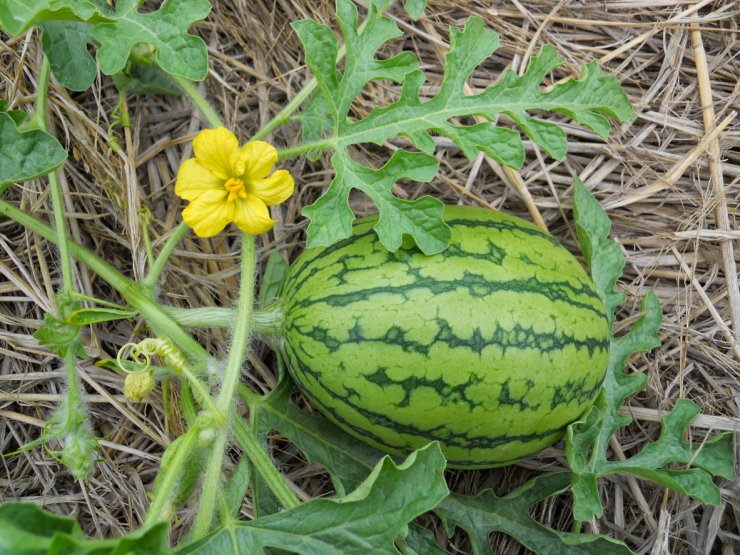
Watermelon and flower
Seeded watermelon plants are easy to pollinate—let the bees take care of it. These plants produce both male flowers, which appear first, and female flowers, which have a swollen base that will turn into fruit once pollinated from the male flowers.
That said, if you have low bee activity in your garden, you’ll want to grow bee-attracting plants nearby, such as ornamental flowers, flowering shrubs, wildflowers, and herbs.
If you want to grow a seedless variety of melon, you’ll have to do a little more work, because seedless watermelons are sterile. You’ll see little white “seeds” in a seedless melon, but these are immature, edible, sterile seeds which won’t render new watermelon—no, not even in your stomach if you eat them!
Instead, most growers grow a seeded pollinator melon with their seedless plants, and once again, wait for bees to do the hard work. Plant a pollinator melon a week or so ahead of your seedless melon to make sure there are flowers ready to help pollinate the seedless plant when it starts to flower.
Have you faced any challenges with pollinating your watermelon plants? How do you handle ensuring the right pollination for your plants? Please share your experience with pollinating your watermelons.


 Previous
Previous

